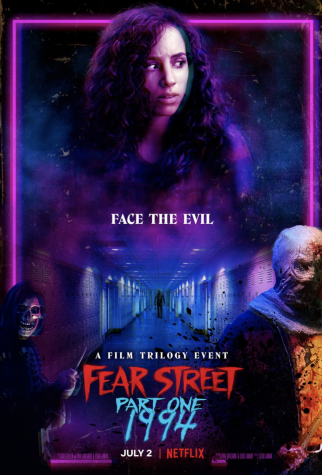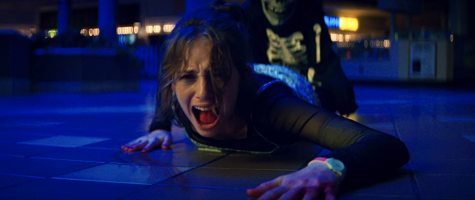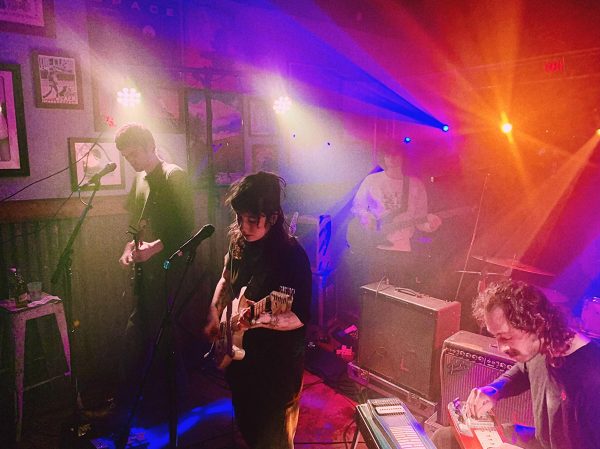‘Fear Street Part One: 1994’ is a fun throwback to 90s slasher films
The horror genre has undeniably evolved over time in its coverage of social themes and psychology, so it’s easy to see how the slasher genre has become less prominent in modern cinema. Most horror fans today can say that while the genre is now more inventive and expressive than it’s ever been, the slasher genre was at its peak during the 1980s and 1990s.
The Netflix original film “Fear Street Part One: 1994,” released on July 2, acts as an exceptional testament to slasher genre history and serves as an engaging adaptation of “Goosebumps” author R.L. Stine’s “Fear Street” book series. Although the original “Fear Street” books are geared towards young adults, the film matures the story and uses its R-rating to reach an older audience that probably has not picked up a Stine book since middle school. Rarer for Netflix, the film rarely holds back in its display of bloody violence, frequent profanity and suggestive content.
For those who’ve been a fan of Stine’s books, the film will come as a near-perfect mixture of modern horror and the nostalgia of Stine’s writing. Fans will have more to look forward to as the one hour and 47-minute film is only the first part of a film trilogy that will be released to Netflix every Friday over the course of three weeks with “Fear Street Part Two: 1978” releasing July 9 and “Fear Street Part Three: 1666” releasing July 16.

This film being set in 1994, it takes place in the small town of Shadyside, Ohio and follows a group of teenagers (Kiana Madeira, Olivia Scott Welch, Benjamin Flores Jr., Julia Rehwald, and Fred Hechinger) as they evade a serial killer over the course of a night. In their efforts to survive, they are forced to confront a shocking discovery that points to the presence of an eternal evil that has plagued their town for centuries. To survive, the group must rely on wits and work together to defeat the evil that is responsible for the gruesome cycle of murders in their town.
The plot itself isn’t complex or thoroughly engaging by any means, but it’s more so compared to a TV pilot in the way that it sets up the premise for the trilogy and ends on a cliffhanger that makes way for the coming films. The expository first act can feel slow at times, as it feels like a familiar retread of old slasher film cliches and character archetypes.
While the film takes the appropriate time to highlight the characters and their relationships with one another, the film really only finds its footing in the latter portion of the second act and going forward. The film’s presence of old-school cliches and archetypes can be attributed to its intention to pay homage to older slasher films, like how the film’s bait-and-switch opening is borrowed from the first installment of 1996’s “Scream.” Although the story is familiar and doesn’t seem like the most developed aspect, viewers may be able to find enjoyment in the thrills and how the film acts as a campy love letter to 90s slashers.
The acting in the film is fairly decent at best, as the main cast does well with the campy lines they are given. The aspect where the cast really shines is in their interactions with each other that often features the film’s most humorous moments. The casting of lesser-known actors in the main cast works well in its favor, as it allows for viewers to form a more natural connection to the characters.

The film excels in recreating the mood and atmosphere of horror films that belong to the 90s. The soundtrack adds a layer of charm to the movie as it features hit songs from several well-known 90s grunge tracks from bands such as Radiohead, Nine Inch Nails and Garbage to further immerse viewers into the time period. The costumes and set design also feel authentic to the period in a way that drives home the retro feeling of nostalgia that the film successfully conveys.
“Fear Street Part One: 1994” works as a further regeneration of the slasher genre of horror and works as a great introduction to the new trilogy. As most would think that R.L. Stine’s work is restricted to children’s books, the film proves that his material can be elevated to a more mature and chilling level. The film retains the entertaining quality of Stine’s novels in a way that both old and new fans alike can come to enjoy. For those who are looking to rediscover the magic of 90s slasher films or a new horror franchise to become invested in, “1994” shows great promise for its successors “1978” and “1666.”











